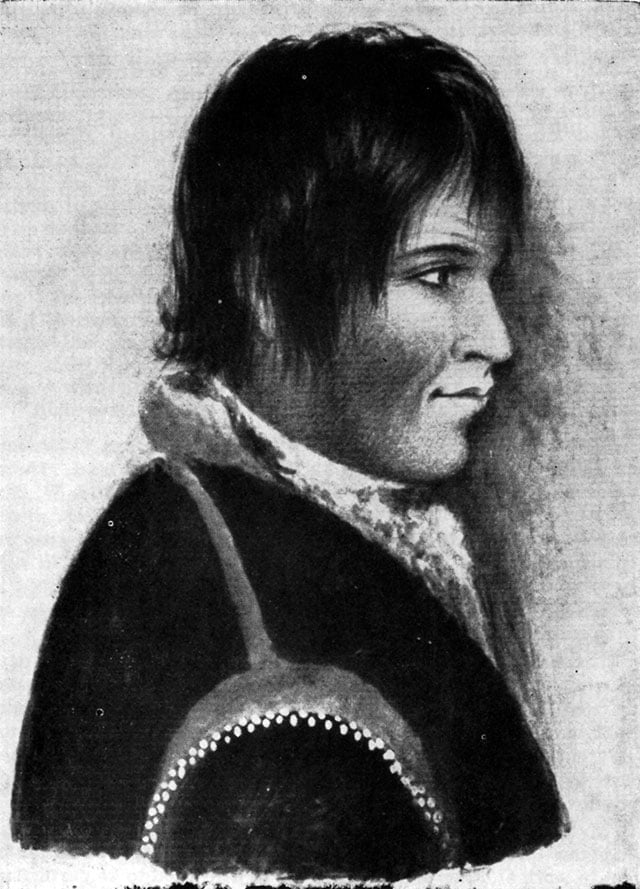From The Story of Dartmouth, by John P. Martin:
By 1842, when Dartmouth was nearly 100 years old, there still seemed to be no regular system of mail transportation. About that time, a resident complained to the newspapers that letters from abroad, addressed to Dartmouth, were detained at Halifax until nearly half a bushel had accumulated. Then they were sent over by a carrier who charged one penny on each letter for his trouble.
There was no recognized Post Office in Dartmouth until about 1870. Instead there was a “way office”. In small centers, such as ours, letters were left at the village store, commonly known as two-penny offices, because the keepers charged two pence on every letter passing through their hands. A letter from England to Halifax would cost 20 cents, but it might be taxed 16 or 18 cents extra to send it a few miles farther—all depending on the number of way-offices through which the letter would pass. As a consequence, there were more letters in the pockets of passengers on stage-coaches, than there were in the mail bags.
The Dartmouth way-office about this time, is thought to have been at McDonald’s general store. Dr. John McDonald, who is now managing the business since the death of his half-brother Allan, must have been a man of some ability, as he was appointed one of the Governors of Dalhousie College in 1842, and also made a Justice of the Peace for Dartmouth.
In mid-April 1842, the greatest excitement was aroused in Dartmouth and Halifax by the loss of two little girls, who were the daughters of Mr. and Mrs. John Meagher, occupants of a farm at Lake Loon at the northern extremity of Barker Road on no. 7 highway.
These children were Jane Elizabeth and Margaret Meagher, aged 6 years and 4 years, respectively. They wandered into the woods near their home on a beautifully warm Monday morning, the 11th day of April. The eldest sister of the family was busy with household duties, while the mother with a new-born babe was still confined to her room. Unfortunately also, the father was laid up at the time with an attack of measles.
When the little ones did not return by late afternoon, the hired man searched far into the woods at the rear of the field, but returned unsuccessful. Then the father rose from his sick bed, and with the help of neighbors carrying lighted brands, tramped deeper and deeper into the pathless forest loudly calling the names of Jane and Margaret, but all they got for their efforts was a rebound of the eerie echoes of their voices from the distant tree-tops.
When news reached town on Tuesday, hundreds of volunteers hastened from Halifax and Dartmouth to assist in the hunt. Hope was aroused when the searchers saw footprints in the snow, and also learned from a young Black man named Brown, who lived about two miles from Meagher’s on the opposite side of Lake Loon, that he had heard voices of children crying on the previous evening.
During the whole of that week, an ever-increasing crowd of volunteers comprising neighbors, farmers, Frenchmen, Mi’kmaq, sailors, soldiers, merchants and professional men, threaded nearly every foot of that vast forest until it seemed as if the whole countryside had been combed. Meantime, the weather had grown so cold that it was the general conviction the children must have perished.
Halifax newspapers, nevertheless, issued an appeal for every available man to assemble at Dartmouth on Sunday, April 17, for a combined and organized effort. Nearly three thousand responded. They were determined that the forest should reveal its secret. And it did.
About noon that day the bodies were found on a hill at the head of Lake Major, almost two miles east of the village of Montague. The hero of the hunt was a shepherd dog named “Rover”, scouting in the company of Peter Currie, a neighbor of John Meagher. “Rover” had suddenly sniffed the trail of the babes, and with his nose in the scraggy turf, scurried up a hill to the sheltered side of a high boulder. There he stopped and barked excitedly.
The children were found locked in each other’s arms. The younger one had her cheek tightly pressed against the face of her sister. Young Margaret’s features were calm and peaceful as if she had met death in sleep. Elizabeth’s face, however, plainly showed traces of fear and anxiety, and spoke of days of cold, of hunger and terror. Their tender arms and legs were covered with scratches, and their flimsy dresses in tatters. They had traveled about six miles.
The bodies were left undisturbed until the father was escorted to the spot. Many in that motley throng, now gathering around reverentially amid the awful presence of death, could not restrain a tear as the stricken parent knelt and lovingly embraced each lifeless form. Willing hands, working in relays, then carefully carried the precious burdens back to the Meagher home.
The remains were placed into one coffin, and two days later were interred in the historic cemetery at Woodlawn. A reward of £5 offered for their discovery, was turned over by Mr. Currie to head a fund for the erection of a headstone.

In the Legislature:






